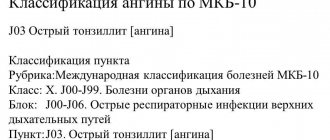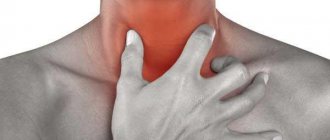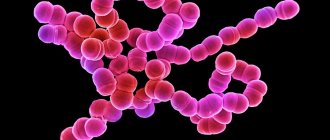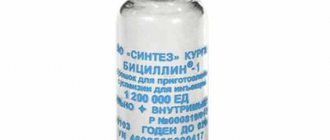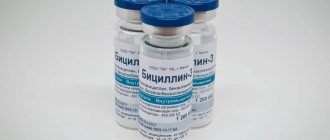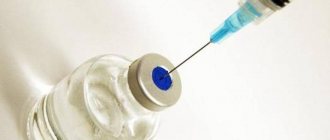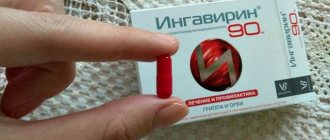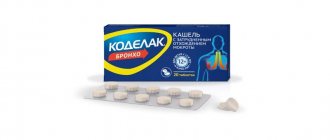Release form and composition
The drug is available in powder form for the preparation of a solution for intramuscular administration in 10 ml bottles:
- Bicillin 1 is a white, odorless powder. When water is added it forms a stable suspension. Contains 600,000 or 1,200,000 units of benzathine benzylpenicillin;
- Bicillin 3 is a white powder, sometimes with a yellowish tint. Forms a stable suspension when water is added. Contains 200,000 or 400,000 units of benzathine benzylpenicillin, benzylpenicillin novocaine salt and benzylpenicillin sodium;
- Bicillin 5 is a white powder with a bitter taste. When adding saline, water or novocaine solution (0.25-0.5%) it forms a milky homogeneous suspension. Contains 300,000 units of benzylpenicillin novocaine salt and 1,200,000 units of benzathine benzylpenicillin.
Description of Bicillin
Bicillin is a long-acting penicillin antibiotic.
In appearance, it is a white, yellowish or cream-colored injection powder. When diluted, it produces a stable white suspension. They produce 3 forms of “Bicillin”:
- Bicillin 1 – contains 2.4 million units
- Bicillin 3 – from 600 thousand to 1.2 million units
- Bicillin 5 - benzathine contains benzylpenicillin in the amount of 1.2 million units and benzylpenicillin procaine in the amount of 300 thousand units.
Indications for antibiotic use:
- Rheumatism, including for preventive purposes all year round
- Syphilis, tropical syphilis
- Diseases caused by streptococci other than group B streptococci
- Other pathologies caused by microorganisms sensitive to the active substance of the drug
The drug is not prescribed for:
- Individual intolerance
- Breastfeeding period.
Relative contraindications are pregnancy, asthma, uncompensated renal failure, allergic reactions of unknown etiology. In these cases, the drug should be administered for health reasons, when the expected benefit to the patient is higher than the possible consequences.
Side effects of Bicillin:
- Various allergic reactions
- Thrombosis, decreased blood clotting rate
- Iron deficiency conditions
- Pathological processes in the oral cavity - stomatitis, inflammation of the tissues of the tongue.
All 3 forms of Bicillin are available from pharmacies only with a prescription.
Directions for use and dosage
According to the instructions, Bicillin is injected deeply intramuscularly into the gluteal muscle. Intravenous administration of the drug is prohibited, as the risk of developing Ouanier syndrome (feelings of anxiety and depression, blurred vision) increases.
For the treatment and prevention of infectious diseases, adults are prescribed Bicillin 1 at a dosage of 300,000 and 600,000 units once a week or 1,200,000 units twice a month. For rheumatism, the dose is increased to 2,400,000 units twice a month. To prevent relapses of rheumatism, 600,000 units are prescribed once a week for 1.5 months together with other non-steroidal anti-inflammatory drugs or acetylsalicylic acid.
Syphilis is treated according to special instructions: an average dose of 2,400,000 units is prescribed 2 or 3 times at intervals of 8 days.
The dose of Bicillin 3 is 300,000 units. Repeated injections are carried out no earlier than 4 days after the previous injections. At a dose of 600,000 units, the drug is administered once every six days.
A single dose of Bicillin 3 for the treatment of syphilis (primary and secondary) is 1,800,000 units. Duration of therapy – 7 injections. In this case, the first injection is carried out at a dosage of 300,000 units, the second (a day later) - at the full dose, and subsequent injections are also given at the full dose twice a week.
When treating latent early and secondary recurrent syphilis, the dose for the first injection is 300,000 units, and for subsequent injections - 1,800,000 units. The frequency of injections is twice a week. Duration of the course – 14 injections.
In the instructions for Bicillin 5, the recommended single dose is 1,500,000 units for adults (one injection per month), 600,000 units for children under 8 years of age (1 injection every 3 weeks) and 1,200,000-1,500,000 units for children over 8 years of age (one injection per month).
The suspension is prepared immediately before administration. Add 5-6 ml of 0.9% NaCl solution, sterile distilled water or 0.25-0.5% novocaine solution to the Bicillin 5 bottle. The mixture is shaken for half a minute until a homogeneous suspension is formed and immediately administered.
Side effects
The instructions for Bicillin contain a list of negative reactions that can be caused by the use of the drug:
- headache, dizziness, tinnitus;
- bronchospasm;
- diarrhea, nausea, glossitis (inflammation of the tongue), stomatitis, liver dysfunction;
- interstitial nephritis;
- myocardial dysfunction, blood pressure fluctuations;
- hemolytic anemia, thrombocytopenia, leukopenia, agranulocytosis, eosinophilia;
- urticaria, skin rashes, dermatitis, swelling, chills, fever, anaphylactic shock, angioedema;
- superinfection (in weakened patients) caused by microflora resistance to the drug.
special instructions
If an allergic reaction develops while using Bicillin, treatment with the drug should be stopped immediately. If symptoms of anaphylactic shock appear, it is necessary to urgently take measures to remove the patient from this state (administer glucocorticoids, norepinephrine, and, if necessary, perform artificial ventilation).
When treating sexually transmitted diseases, when syphilis is suspected, microscopic and serological studies are performed before starting treatment and over the next 4 months.
Due to the possibility of developing fungal infections when using Bicillin, it is advisable to prescribe vitamin C and B vitamins, as well as, if necessary, levorin and nystatin. It should be borne in mind that stopping treatment too early and/or using the drug in doses lower than recommended may lead to the emergence of resistant strains of pathogens.
If during intramuscular injection blood appears in the syringe (which indicates that the needle has entered the vessel), it is necessary to remove the syringe and then inject into a new place. After removing the needle, the injection site should be pressed down with a cotton swab. This prevents the drug from entering the muscle tissue into the subcutaneous tissue.
Contraindications
Hypersensitivity to β-lactam antibiotics (penicillins, cephalosporins, carbapenems), novocaine;
Bronchial asthma, urticaria, hay fever and severe allergic reactions.
Interaction with other drugs and other types of interactions
.
When used simultaneously with bactericidal antibiotics (including cephalosporins, cycloserine, vancomycin, rifampicin, aminoglycosides), a synergistic effect is observed; with bacteriostatic antibiotics (including macrolides, chloramphenicol, lincosamides, tetracycline) - antagonism.
Bicillin®-5 reduces the effectiveness of oral contraceptives and ethinyl estradiol (risk of breakthrough bleeding). It is not recommended to combine with non-steroidal anti-inflammatory drugs. Benzylpenicillin reduces the clearance and increases the toxicity of methotrexate.
When used simultaneously with allopurinol, the risk of allergic reactions increases.
Pharmacokinetic interaction.
With simultaneous use of diuretics, allopurinol, phenylbutazone, NSAIDs, they reduce tubular secretion and increase the concentration of penicillin.
It should be borne in mind the possibility of competitive inhibition of the process of excretion from the body when using benzylpenicillin simultaneously with anti-inflammatory and antipyretic drugs (indomethacin, phenylbutazone, salicylates in high doses). Aspirin, probenecid, thiazide diuretics, furosemide, ethacrynic acid increase the half-life of benzylpenicillin, increasing its concentration in the blood plasma, thereby increasing the risk of developing its toxic effect by affecting the tubular secretion of the kidneys. Allopurinol increases the risk of allergic reactions (skin rash).
Avoid simultaneous use with chloramphenicol, erythromiuine, tetracycline, sulfonamides.
When used simultaneously with methotrexate, the excretion of the latter decreases and the risk of its toxicity increases.
Penicillins may interfere with diagnostic tests such as urinary glucose with copper sulfate, direct antiglobulin (Coombs' test), and some serum or urinary protein tests. Penicillins can also interfere with tests that use bacteria, such as the Guthrie test for phenylketonuria, which uses the organism Bacillus subtilis
.
Opinions
As a rule, positive reviews about Bicillin-5 in most cases talk about its high effectiveness at a low price. The antibacterial agent is characterized as practically non-toxic, noting its prolonged action. Patients who have been injected with the medicine are warned that injections must be carried out with extreme caution and with special medical skills.
In addition to positive reviews, there are also negative ones, for example, people talk about the pain of injections and the deterioration of intestinal microflora.
How to give an injection correctly
Since the antibiotic is poorly soluble in water, it is administered to the body using intramuscular injections. For the injection, use a syringe 60 millimeters in length and 0.8 millimeters in diameter (number 60). Bicillin in the bottle is diluted with three milliliters of water or isotonic saline solution. The contents must be mixed thoroughly.
To eliminate the risk of hematomas, doctors do not recommend injecting in the same place. It is unacceptable to inject the drug into areas that are irritated and swollen after previous injections.
Before starting to use antibacterial agents, it is important to accurately diagnose the disease and perform bacteriological tests.
Effect of the drug
The active substance has an antibacterial effect against:
- Staphylococci, streptococci, enterococci, listeria, clostridia.
- Meningococcus, spirochetes.
The antibiotic does not have antibacterial activity and is not used to eliminate diseases caused by:
- viruses;
- protozoa;
- rickettsia;
- fungi.
The mechanism of action is based on the process of inhibition of a specific strain, which is involved in the formation of the main active microelement of the cell wall. As a result, its strength is impaired, and harmful bacteria are eliminated.
The disadvantages of the active component are the following:
- instability to penicillins;
- slight absorption in the stomach;
- lack of positive effect against gram-negative sources of disease.
When treating infections caused by penicillin-sensitive microorganisms, potassium and sodium salts are used. But due to the short time period of their action and instant elimination, long-acting forms in the form of poorly soluble salts are also used.
Bicillin-5 injections are considered a combination of two poorly soluble salts. With the help of long-term dissolution, a depot is created at the injection site, which helps reduce the frequency of injections and maintain the content of the antibacterial agent in the plasma at the required level.
The main condition for prescribing the drug is maintaining effective concentrations of the antibiotic in the blood for a long time.
Bicillin prophylaxis
Bicillin prophylaxis is a course of antibiotic therapy aimed at treating and preventing the negative consequences of tonsillitis. Pathologies that require the use of medication include sepsis, rheumatism, heart disease, and streptococcal shock. Bicillins cope with most harmful microorganisms that provoke the listed ailments.
Moreover, the drug is able to treat the symptoms of the following complications after tonsillitis:
- Ear pathologies: labyrinthitis, otitis;
- Lesions of the lining of the brain: meningitis, encephalitis;
- Abscesses.
By undergoing a course of Bicillin therapy, the patient minimizes the recurrence of sore throat and the development of its most common complications. Often an antibiotic helps to avoid negative consequences in case of uncertain pathology. When symptoms become obvious or blood tests indicate a specific disease, the drug is changed as prescribed by the attending physician.
